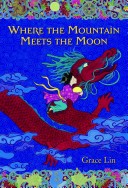by Ann Parker, Pima Community College, Tucson, Arizona
I realized that the lowlands were always given to the poor, so naturally the Ninth Ward would flood.
“I’ll tell you what happened to me, but you have to promise never to use my name.”
. . . Kristallnacht was a blink in time . . .
Today’s blog continues the discussion between authors Ruta Sepetys, Jim Deem, and Jewell Parker Rhodes at the 2012 Tucson Festival of Books in March entitled “Confronting Difficult Life Events through Story.”
Continue reading



 Today’s blog begins a discussion by authors Ruta Sepetys, Jim Deem, and Jewell Parker Rhodes at the 2012 Tucson Festival of Books in March entitled “Confronting Difficult Life Events through Story.” The discussion will continue in the next two blogs. All three authors have published books, both fiction and non-fiction, that deal with terrible historical events and the resiliency of people to endure in the most horrific of circumstances.
Today’s blog begins a discussion by authors Ruta Sepetys, Jim Deem, and Jewell Parker Rhodes at the 2012 Tucson Festival of Books in March entitled “Confronting Difficult Life Events through Story.” The discussion will continue in the next two blogs. All three authors have published books, both fiction and non-fiction, that deal with terrible historical events and the resiliency of people to endure in the most horrific of circumstances.





 In the theory of “suspension of disbelief” as suggested by British poet and philosopher Samuel Taylor Coleridge, it is the storyteller or author who must spin such a compelling tale that the listener/reader will accept a fantasy as a plausible reality. In
In the theory of “suspension of disbelief” as suggested by British poet and philosopher Samuel Taylor Coleridge, it is the storyteller or author who must spin such a compelling tale that the listener/reader will accept a fantasy as a plausible reality. In  Folklore, fables, myths, and legends, stories that originated in the oral tradition are the indigenous literature in every society. Since people were first able to use language for communication, oral storytelling is the way we have passed on our culture and history, beliefs and values. Traditional literature themes reoccur across cultures. These stories explain the relationships between human beings and the animal, plant, and astrological or seasonal worlds. Although the stories may include different symbols and representations, these “folk” ideas center on elemental figures—mother, father, God, trickster, hero, old man, crone, witch, or devil, and on elementary concepts—creation, destruction, birth, death, initiation or coming of age, separation from parents or community, marriage, or the union of opposites.
Folklore, fables, myths, and legends, stories that originated in the oral tradition are the indigenous literature in every society. Since people were first able to use language for communication, oral storytelling is the way we have passed on our culture and history, beliefs and values. Traditional literature themes reoccur across cultures. These stories explain the relationships between human beings and the animal, plant, and astrological or seasonal worlds. Although the stories may include different symbols and representations, these “folk” ideas center on elemental figures—mother, father, God, trickster, hero, old man, crone, witch, or devil, and on elementary concepts—creation, destruction, birth, death, initiation or coming of age, separation from parents or community, marriage, or the union of opposites.  While those of us living in the United States eagerly await a Monday in January for the announcement of the various American Library Association Awards, book lovers all over the world have their own days of wondering “who will win?” This week I will explore a variety of awards given in countries where English is the dominate language. Each country has its equivalent of a children’s writing award and an illustration award. However in most countries the award is given to books which have been pre-generated on a “short list” much like the National Book Awards in this country.
While those of us living in the United States eagerly await a Monday in January for the announcement of the various American Library Association Awards, book lovers all over the world have their own days of wondering “who will win?” This week I will explore a variety of awards given in countries where English is the dominate language. Each country has its equivalent of a children’s writing award and an illustration award. However in most countries the award is given to books which have been pre-generated on a “short list” much like the National Book Awards in this country.